Table of Contents
Ecosystem:
- The term ecology was coined by Ernst Haeckel in 1866.
- Ecology deals with the study of organisms in their natural home interacting with their surroundings. The surroundings or environment consists of other living organisms (biotic) & physical (abiotic) components.
- The ecosystem is a self-sustained & self-regulated segment of nature that consists of a biotic community & its physical environment, both interacting & exchanging materials.
- In other words, the Ecosystem may be defined as a structural and functional unit of the biosphere comprising living organism and their non-living environment.
- Ecology is often defined as ‘the study of ecosystem’.
- The term ecosystem was coined by Tansley (1935).
- The desert, grassland, forest, crop-field & mountains represent terrestrial ecosystems (land-based ecosystems).
- Whereas ponds, lakes, river, sea & aquarium represent aquatic ecosystems (water-based ecosystems).
- Most of the ecosystems in the world are natural ecosystems but some of them are also man-made ecosystems or artificial ecosystems. Examples of artificial ecosystems are crop-fields (agricultural lands), gardens, parks, aquarium, etc.
- Agro-ecosystem is the largest man-made ecosystem.
Structure of an Ecosystem:
Biotic Component:
The plants, animals & microorganism present in an ecosystem form the biotic component.
Producers:
- which synthesize their own food.
- The various producers are green plants, algal protists, cyanobacteria, green & purple bacteria, some colourless chemosynthetic bacteria.
- Except chemosynthetic bacteria, all others obtain energy from solar radiations & are called photoautotrophs.
- Photoautotrophs convert solar energy in to chemical energy. Therefore, they are also called transducers.
Consumers:
- All organisms which get their organic food by feeding upon other organisms are called consumers.
- Herbivores – plant eaters – primary consumers.
- Carnivores – meat eaters.
- Omnivores – They feed on both plants & animals.
- Detritivores (Detritus feeders) – They feed on the parts of dead organisms, wastes of living organisms, their cast-offs & partially decomposed matter. Example beetles, termites, ants, crabs, earthworms etc.
Decomposers:
- They are saprotrophic micro-organisms which obtain nourishment from organic remains.
- In this process,organic remains are completely degraded.
- It liberates inorganic nutrients.
- Because of this phenomenon the decomposers are also called mineralisers.
- The phenomenon is essential for biogeochemical cycling.
- Example– bacteria & fungi.
Abiotic Component:
- The abiotic components of an ecosystem (or the non-living components of an ecosystem) include the physical environment like soil, water & air alongwith the inorganic substances like carbon dioxide, nitrogen, oxygen, water, phosphorous, sulphur, sodium, potassium, calcium & other elements present in them.
- The physical factors or climatic factors like light, temperature, pressure & humidity are also considered abiotic components.
Biome & Biosphere:
- The natural ecological groupings of plants & animals on the basis of climates are called biomes.
- In other words, all the ecosystems taken together in a given geographical area having the same type of climate is called a biome.
- All the biomes of the world taken together form an extremely large & self-sustaining biological system called biosphere.
- The world of living organisms together with the layers of soil (land), water & air on the surface of earth is called biosphere.
- Biosphere consists of four parts –
- Lithosphere (land surface or soil),
- Hydrosphere (water bodies),
- Atmosphere (air),
- Living organisms (like plants & animals).
Planktons:
- Are very minute or microscopic organisms freely floating on the surface of water in a pond, lake, river or ocean.
- Planktons are of two types– Phytoplanktons & Zooplanktons.
- The microscopic aquatic plants freely floating on the surface of water are called phytoplanktons. The free-floating algae is an example of phytoplankton.
- The microscopic aquatic animals freely floating on water are called zooplanktons. The freely-floating protozoa are an example of zooplankton. A very, very small fish is also a zooplankton.
Food Chain & Food Web:
- The sequence of eating & being eaten in an ecosystem is known as food chain.
- or The sequence of living organisms in a community in which one organism consumes another organism to transfer food energy is called a food chain.
- Some common examples of simple food chains are –
- Grass —–> grasshopper —–> Frog —–> Snake —–> Hawk (Grassland ecosystem).
- Phytoplanktons —–> Zooplanktons —–> Small fish —–> Carnivorous fish (pond ecosystem).
- Lichens —–> reindeer —–> Man (Arctic tundra).
- Leaf litter —–> algae —–> crabs —–> small carnivorous fish —–> large carnivorous fish (Mangrove ecosystem).
- Dead organic matter —–> fungi —–> bacteria (Forest ecosystem).
- Food web or food net is interlocking of two or more types of food chains at different trophic levels in such a way that a particular food becomes available to two or more types of populations while a consumer has choice of two or more types of food.
- In simpler words, the network of a large number of food chains existing in an ecosystem is called a food web.
Significance of food chain & food web:
- Food chains & food webs play a very significant role in the ecosystem because the two most important functions of energy flow & nutrient cycling take place through them.
- The food chains also help in maintaining & regulating the population size of different animals & thus, help maintain the ecological balance.
- Food chains show a unique property of biological magnification of some chemicals. There are several pesticides, heavy metals & other chemicals which are non-biodegradable in nature. Such chemicals are not decomposed by microorganisms & they keep on passing from one trophic level to another. And, at each successive trophic level, they keep on increasing in concentration. This phenomenon is known as biomagnification or biological magnification.
Other Points:
Trophic Level:
The distinct sequential steps in the food chain where transfer of energy occurs are referred to as trophic levels.
10% percent law:
This law was given by Raymond Lindeman. According to this law only 10% percent of energy, entering the particular level, would be available for transfer to the next higher level and 90% would be returned back in the form of heat.
For Example, if plants receive 1000 J of energy, 990 J of this energy is lost as heat to the environment and only 10 J of it is available as food to the next trophic level. Out of this 10 J of energy 9 J is lost to the environment and only 1 J of energy is available as food to the next trophic level. Thus, if a food chain has more than steps then the energy available at the last step would be negligible to sustain the life processes.
Ozone Hole:
A decline in thickness of the ozone layer over a restricted area is called the ozone hole. The ozone hole was first discovered over Antarctica in 1985.
Greenhouse Effect:
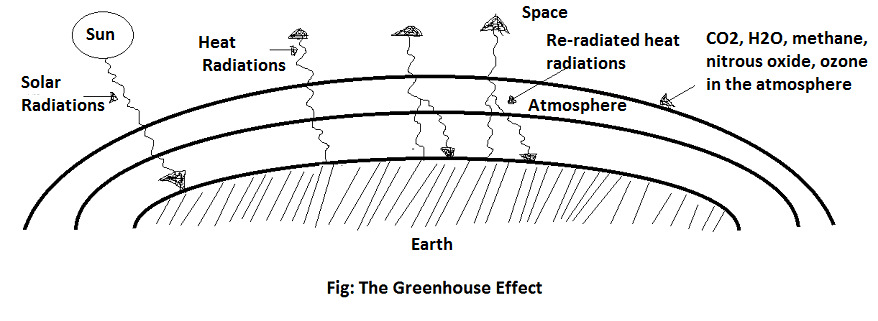
The earth receives light of different wavelengths from the sun. The ozone layer in the upper reaches of the atmosphere absorbs the most harmful ultraviolet radiation and allows other wavelengths to pass through it. A part of the sunlight incident on the earth is reflected back in the form of infrared light. Infrared radiations have a heating effect in them. This infrared light is absorbed by the carbon dioxide molecules. Hence the envelope of CO2 of the atmosphere is able to trap the infrared light and thereby heating the atmosphere. This heating of the atmosphere by the trapped infrared radiations is called the greenhouse effect.
The greenhouse effect results in the increase in temperature of the earth as a result various ice glaciers melt and thus increases the sea level. As a result of which land get submerged in water. Increase in temperature also affects all forms of life.
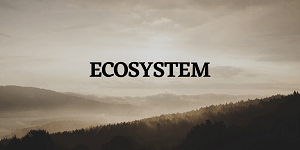
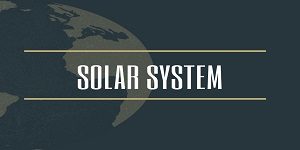
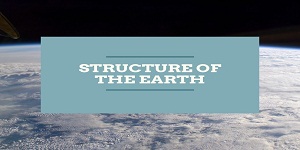
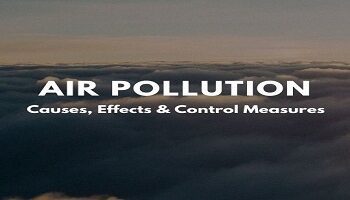
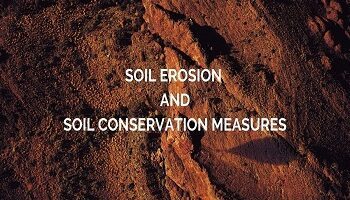
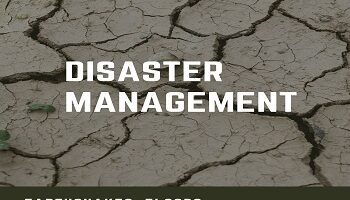

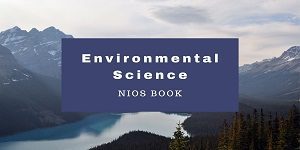
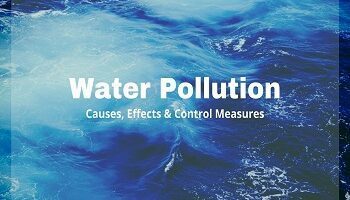
Comments (No)